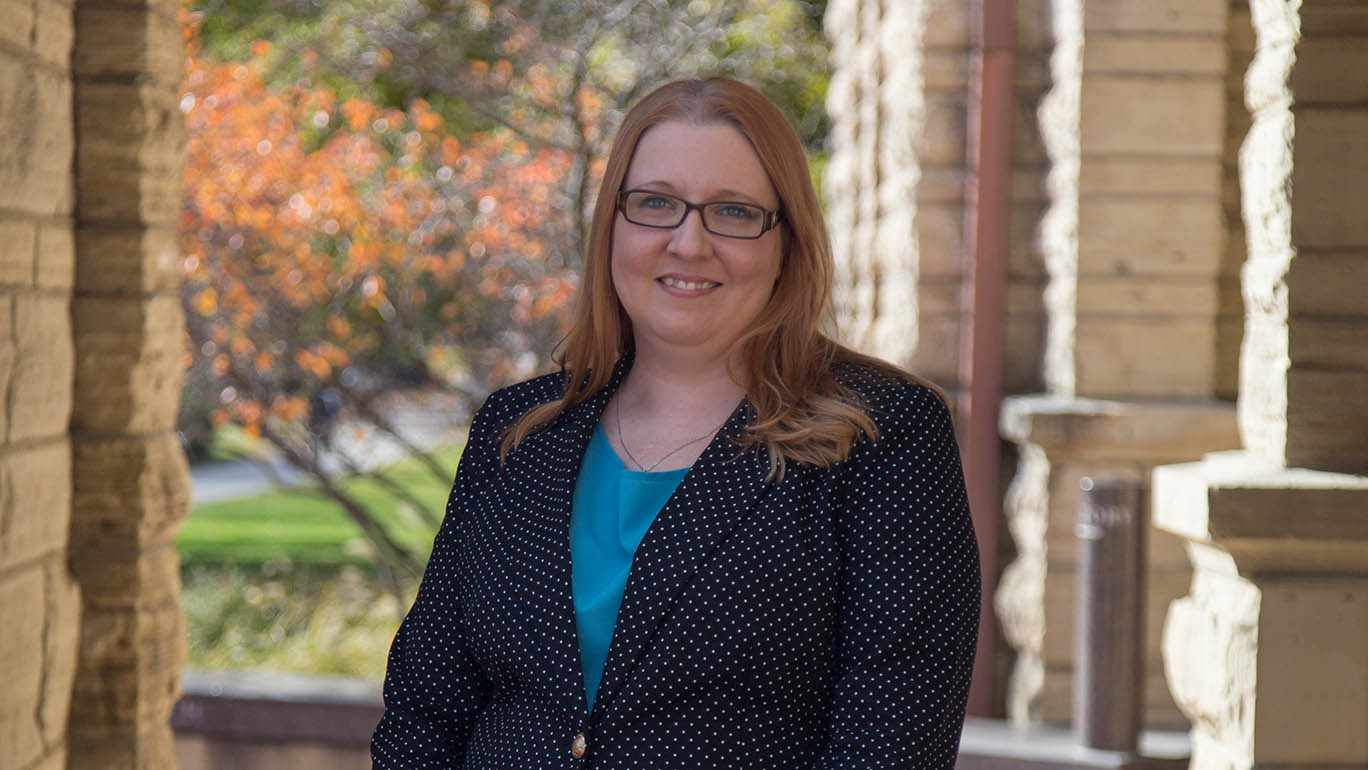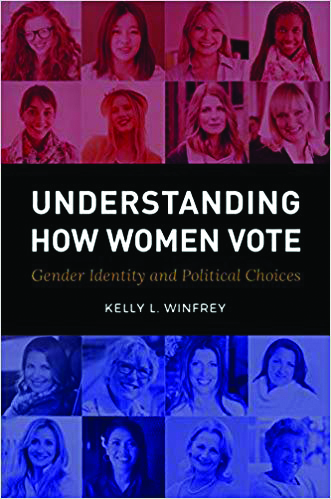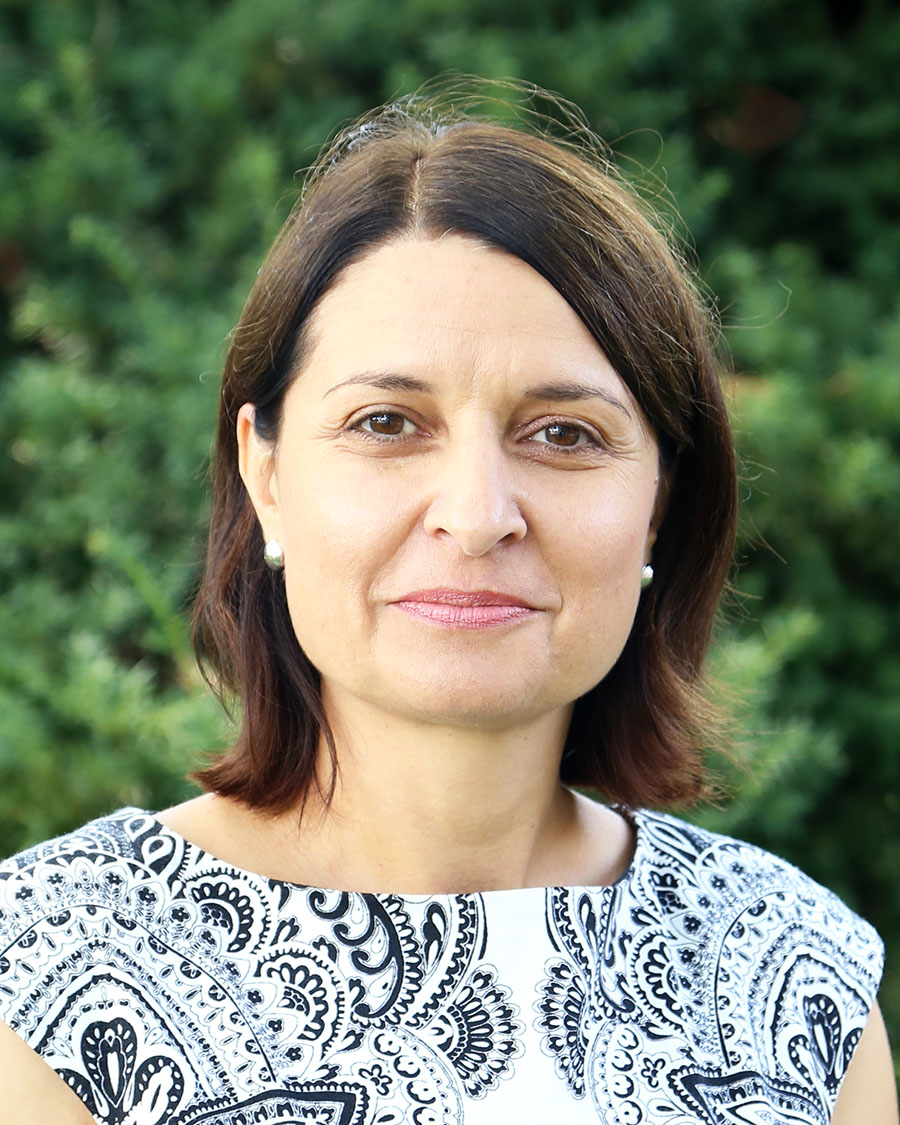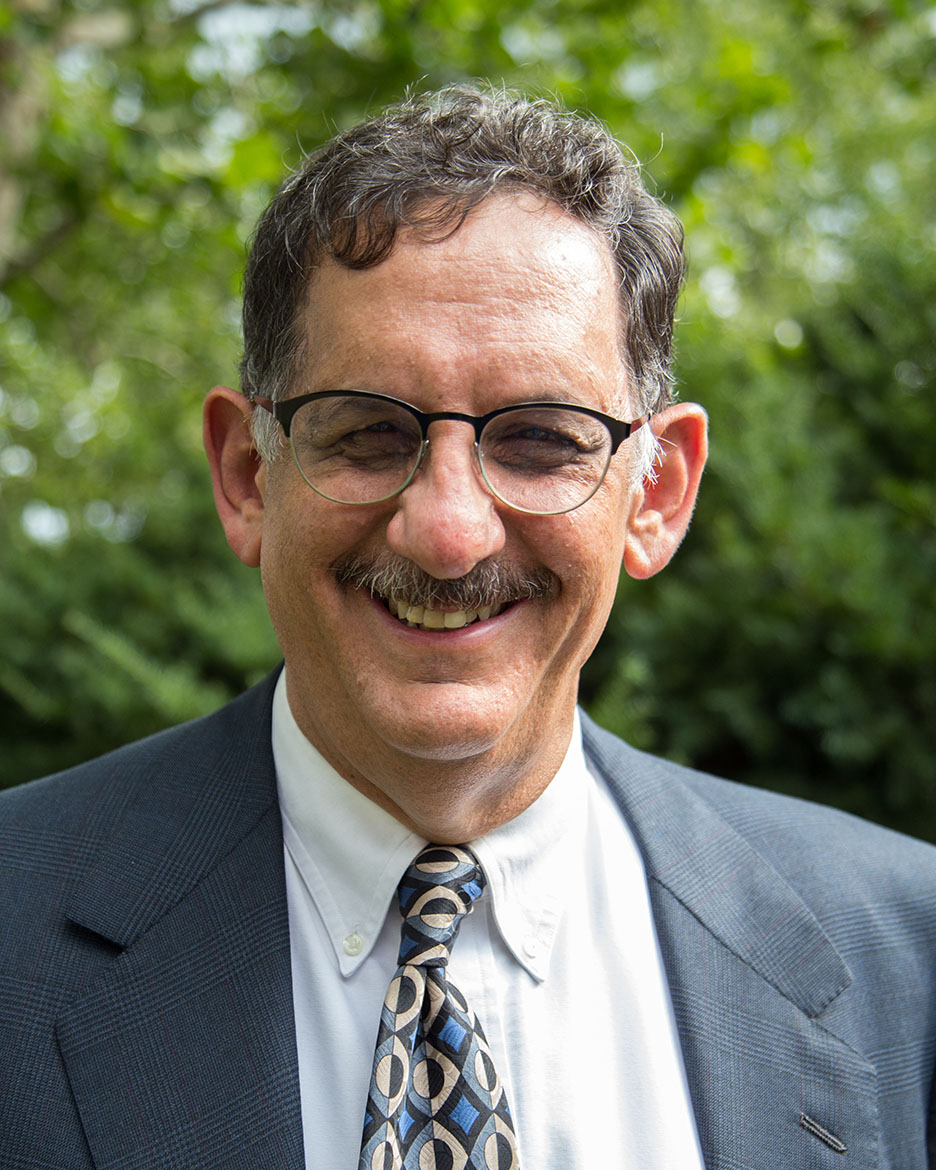
Written by Tara Larson, senior in journalism and mass communication
As results trickled in Nov. 6, 2018, it became clear women weren’t just going to crack glass ceilings this midterm election cycle. In many cases, they’d shatter them.
While the record number of women running for—and winning—elections at all levels in 2018 has been exciting for many Americans, it’s downright thrilling for Greenlee School Assistant Professor Kelly Winfrey. Winfrey, who studies political communication and gender, also serves as the research and outreach coordinator for Iowa State’s Carrie Chapman Catt Center for Women and Politics. This fall, she took on an additional role as interim director of the Catt Center following longtime director Dianne Bystrom’s retirement in August. (Karen M. Kedrowski took the reins as director in January.)
The historic election contributed to a whirlwind year of media appearances and analyses for Winfrey.
On election night, she kept a close watch on the results, waiting off set at WHO-TV until it was time to offer her commentary on the station’s election special. After months of helping Iowa women prepare for campaigns as part of the Catt Center’s Ready to Run Iowa program, studying media coverage and campaign ads and analyzing the numbers, the night felt like somewhat of a crescendo for Winfrey, as well.
Record-breaking year
“For someone who studies politics, to be in Iowa, that is a dream,” Winfrey said.
While the nation always keeps a close eye on Iowa at caucus time, the 2018 election results also gave them reason to watch. Previously, Iowa was one of five states to have never elected a woman to the U.S. House of Representatives, according to the Catt Center. In 2018, it elected two. Abby Finkenauer and Cindy Axne join Senator Joni Ernst, making half of the state’s Congressional delegation female. At the state level, 41 women were elected to serve in the Iowa legislature—a 29 percent increase—and Kim Reynolds became Iowa’s first elected female governor.
Iowa wasn’t alone. According to the Center for American Women and Politics, a record-breaking 126 women will serve in the 116th Congress. Eight other states elected women governors. More women won, but more also ran.
“We can’t know for sure [why more women ran for office],” Winfrey said. “I think there are two big reasons, particularly on the Democratic side. Trump has motivated a lot of women who are unhappy with his election and that has brought a lot more women to run for office. The #MeToo movement I think also is a big part of highlighting issues that pertain to women.”
Besides the sheer number, Winfrey pointed out this year’s pool of women candidates included more diversity in race and ethnicity, sexual orientation and age than previous years, as well those with combat military backgrounds, including M.J. Hegar, a candidate from Texas who ran for the U.S. House. While Hegar lost her bid, Winfrey notes many will remember her viral web ad “Doors.”
Winfrey also cited two noteworthy female gubernatorial candidates who breastfed children in campaign ads.
“It … showed the human nature of, ‘Yeah, I’m a woman, I’m running for office, I’m a mother, and I’ve got to do these things to get through my day, and some of it is feeding my child and some of it might be making laws,” Winfrey said in an ISU News Service interview.
Roots in research
Winfrey can trace her interest in politics back to middle school. She recalls seeing Anita Hill testify before the Senate Judiciary Committee about allegations of sexual harassment committed by then Supreme Court nominee Clarence Thomas.
While the hearing sparked debate, it sparked something stronger in Winfrey, who noticed the absence of women in leadership roles in the proceedings. Not long after, she was also struck by the public criticism of Hillary Clinton’s approach to her role as First Lady.
“I remember talking to my mom about it and my mom saying, ‘Well, she doesn’t act the way First Ladies are supposed to act,’” Winfrey said. “And at a young age, I was like, ‘Well, what does that mean?’ So, I think it made me really interested in why there weren’t more women in office and what sort of gender stereotypes prevent women from seeking office.”
Winfrey pursued these interests in grad school. Her doctoral dissertation focused on explaining the behaviors of women voters through gender group identification and sex-role ideology.
“I think that a lot of times researchers study what we don’t fully understand. For me, that was why there aren’t more women in leadership positions, and in government in particular.”
Winfrey’s research focuses on how both male and female candidates communicate to voters, specifically, through the use of advertisements. She also studies how gender differences play a role in how candidates present themselves and in how they are perceived. Factors include everything from the issues they focus on to how they dress to their facial expressions.
“In general, we have found that the way male and female candidates are presenting themselves is more similar than different these days,” Winfrey said. “Both men and women try to play up their gender-stereotypical positive traits and play down the stereotypical negatives ones.”
Her research findings on the effects of advertising on voters in the 2012 presidential election led to an opportunity to publish a new book this fall. Understanding How Women Vote: Gender Identity and Political Choices combines her dissertation research and data from the American National Election Study.
Community connection
A desire to see more equality in the number of women and men serving in public office motivates Winfrey and is at the heart of her various roles.
In teaching, Winfrey brings her research into classes such as JLMC 101, the introduction to mass media and society; JLMC 305, publicity methods for nonmajors; and a graduate seminar.
“I really like that I get to work with students from different classes,” she said. “Teaching students from different places in their academic careers gives me different feedback. What a first-year student is thinking about might be very different than what a senior might be thinking about in terms of what issues are important, so I learn from them.”
In addition to students, Winfrey also brings a fresh perspective to colleagues.
“Within Greenlee, [I thought] she would strengthen our research that looks at women in communication and issues surrounding gender,” said Michael Dahlstrom, Greenlee associate director and associate professor.
While her analysis of the 2018 election will continue and the 2020 election cycle is already gearing up, Winfrey also has her sights set on the Catt Center’s next round of Ready to Run Iowa, a campaign training program that encourages women to become involved in public life as leaders in their communities. The next workshops take place in spring 2019 and cover a variety of topics including launching a campaign, working with the media, fundraising and online campaigning.
“In 2019 I’m conducting research that examines the communication strategies that made so many women successful in their 2018 campaigns. I’ll also be looking forward to 2020 at women who have already or may launch a campaign. We’ll also be gearing up for the caucuses, and that is one of my favorite parts of living in Iowa.”
 Winfrey’s recent release
Winfrey’s recent release
Do women prefer female or male candidates? What issues do they care about? Which candidate traits are important to them? Kelly L. Winfrey explores these questions and more in Understanding How Women Vote: Gender Identity and Political Choices (Praeger, 2018). The book focuses on the psychological and sociological reasons for the gender gap in American politics. It presents original research and theory on group identification to explain specific political beliefs and behaviors, while providing examples and explanations. In addition, it offers advice for candidates who seek to engage and persuade women.
Political communication at Greenlee
 An international look
An international look
As social media becomes more pervasive in our lives, so does its usage in campaigning. “Social Media and Political Campaigning Around the World,” a special issue of Journalism & Mass Communication Quarterly co-edited by Professor Daniela Dimitrova, addresses the complexities of social media content, its use and the effects on political campaigns, both in the U.S. and abroad. “In the beginning of social media there was a lot excitement about how it was going to democratize everything. Over time, we’ve realized it’s a little more complex. Now we’re talking about things like fake news going viral, we’re talking about political polarization and trolling, so I think it’s challenged some of our assumptions about how people function online and would use some these technologies,” Dimitrova said. Read more.
 TV political ad spending
TV political ad spending
According to a study of political advertising for the 2016 Iowa caucuses, the candidates who spent more on TV ads generally received more support on caucus night. However, this does not suggest a candidate can buy an election, said Jay Newell, associate professor. While the $46.3 million spent on TV ads in Iowa influenced which candidates were considered by caucus-goers, Newell says there is no evidence to suggest overspending was rewarded. “We think political advertising is all-powerful, but it’s not,” Newell said. “Candidates who buy the most ads tend to get the most votes, but that could be drawing conclusions from coincidence. Those leading in the polls get more resources. So the additional advertising being purchased is essentially insurance and not as much to move the meter.” Read more.
 2019 Greenlee Summit
2019 Greenlee Summit
With several key elections in 2020, this year will bring a challenging test for civility. That’s why the next Greenlee Summit is focused on communications and civility in our democracy—and how journalism, advertising and PR professionals can foster civil discourse and help promote freedoms necessary for democracy to thrive. Join us on campus Sept. 5-6, 2019. Learn more.